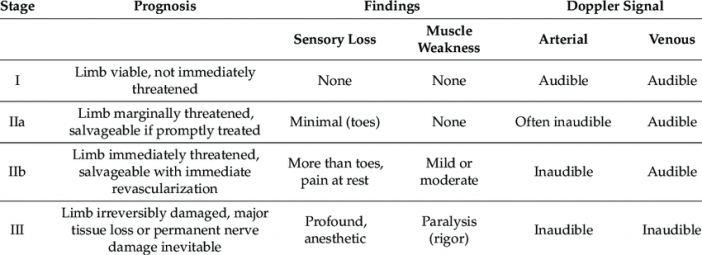Board Review: Cardiology
60-year-old-male presents to the ED with left lower extremity pain that started acutely two hours ago. Pain has been constant and worsening since onset. No new trauma. Patient has a history of HTN, DM, CAD s/p PCI. On exam, patient appears uncomfortable and is writhing in the bed. Right lower extremity with 5/5 strength, 1+ DP and PT pulses. Left lower extremity with ⅗ dorsiflexion and plantarflexion. Extremity is cool to the touch. No DP or PT pulses palpated. On doppler intermittent flow is noted in PT. What are the most important risk factors for this disease?
A. Hypercholesterolemia
B. Smoking and Diabetes
C. Atrial Fibrillation not treated with anticoagulation
D. HTN and CVA
Answer: B- Smoking and Diabetes
Smoking and diabetes are the most important risk factors for arterial occlusion. Other risk factors include hyperlipidemia, hypertension, hyperchromocysteinema, and elevated CRP. Peripheral artery disease has a one year mortality of 25%. Immediate intervention is required to improve outcomes. 80% of lower extremity limb ischemia is due to thrombosis with the remainder being caused by emboli (due to atrial fibrillation, mural thrombus, aneurysms, etc.) and arteritis. Clinical features include pain, pallor, paralysis, pulselessness, paresthesias, and polar (cold limb). Many patients have claudication brought on with exertion and improves with rest. If PAD is the primary diagnosis then it is necessary to immediately consult vascular surgery prior to obtaining imaging. CT angiogram of the extremity is typically the easiest and quickest test to obtain in the ED. Arterial ultrasound is also very useful but has less sensitivity below the calf. Immediate treatment includes IV heparin at 18 units/kgh versus possible surgical intervention. Intervention typically depends on Rutherford Criteria.

Resources:
Chopra, A. & Carr, D. (2016). Section 7: Cardiovascular Disease. In Tintinalli's Emergency Medicine: A Comprehensive Study Guide (8th ed., pp. 420-425). New York, NY: McGraw-Hill Education.
